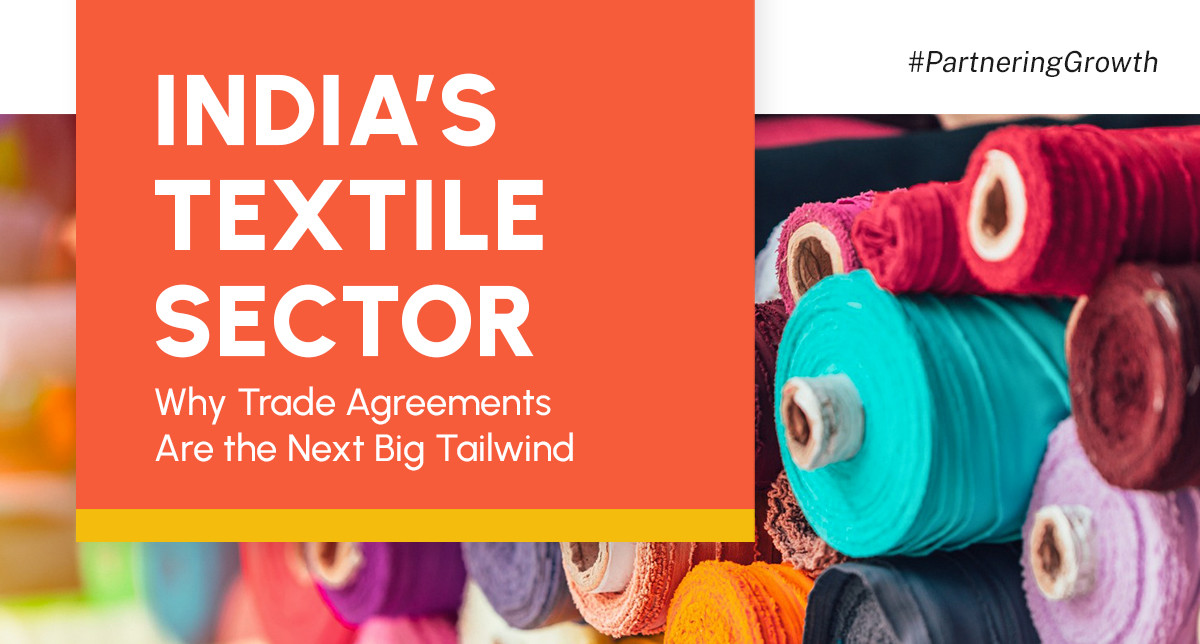


In 2023-24, India's textile exports reached US$34.4 billion, with apparel making up 42% of that total. This strong performance shows the industry’s strengths, such as a large and skilled workforce, a diverse supply of raw materials, and a broad presence of MSMEs, which account for nearly 80% of the sector's capacity. The share of textile and apparel (T&A), including handicrafts, in India's total exports stood at 8.21% in 2023-24, showing its significant contribution to the nation's trade balance. India holds a 3.9% share of the global trade in textiles and apparel, with major export destinations being the USA and EU, which account for about 47% of total textile and apparel exports. The "Amended Technology Upgradation Fund Scheme (A-TUFS)" under Make in India, backed by a budget of Rs. 17,822 crores, aimed to attract investments of Rs. 1,00,000 crore and generate 3 million jobs. Trade agreements are key to maintaining growth. These agreements provide better market access, lower tariffs, and simpler customs processes, making Indian textiles more competitive globally. For example, Free Trade Agreements (FTAs) with key markets like the UAE have already shown positive results. Under the India-UAE CEPA, the UAE eliminated duties on over 97% of its products, covering 99% of India's exports to the UAE in value terms. This has given Indian exporters a considerable advantage, with the issuance of preferential certificates of origin (CoOs) under the FTA with the UAE increasing by 24.7% in 2024-25 compared to 2023-24. It is ascertained that FTAs will help Indian apparel manufacturers expand their operations, attract more investments, and create additional jobs, particularly for women and people in rural areas. The sector already employs over 45 million people directly and provides livelihoods for over 100 million indirectly, with a significant portion being women and rural populations. trade agreements often include rules for standardization, intellectual property protection, and easier investments. This encourages global brands to source more products from India and promotes the transfer of technology. The government’s proactive efforts in building partnerships, along with programs like the Production Linked Incentive (PLI) Scheme for Textiles, are fostering a supportive environment for growth. The PLI Scheme, with a budgetary outlay of Rs. 10,683 crores, aims to encourage the production of Man-Made Fibre (MMF) apparel, MMF fabrics, and technical textiles. Over five years, this scheme is expected to lead to fresh investments of more than Rs. 19,000 crores, achieve a cumulative turnover of over Rs. 3 lakh crores, and create over 0.75 million jobs directly. To conclude, I would say trade agreements are integrating India more deeply into global value chains, strengthening its manufacturing capabilities, and reinforcing its status as a reliable supplier of high-quality textiles and apparel.